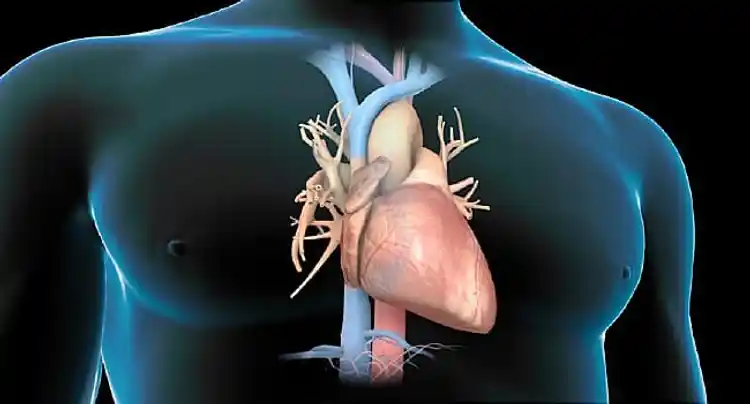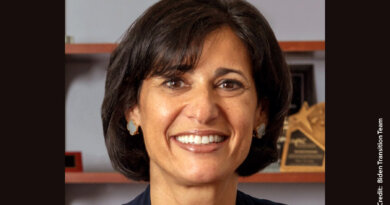New Risk Factors, Better Treatments for AFib: What to Know
May 4, 2023 – Did you know that atrial fibrillation – better known as AFib – is the most common type of heart rhythm disorder, and that by 2030, it’s estimated that about 12.1 million Americans will have it?
The CDC estimates that over 454,000 people are hospitalized with AFib every year and that about 158,000 patients die annually from the disorder. If left untreated, AFib doubles your risk of heart-related death and increases your risk of stroke fivefold, according to the American Heart Association.
With AFib, your heart will either beat too slowly, too quickly, or in an irregular pattern.
“AFib originates from the heart’s upper chambers, mostly from the left atrium,” explained Jorge E. Romero, MD, director of arrhythmia and electrophysiology research and associate director of the ventricular arrhythmia program at Brigham and Women’s Hospital Heart and Vascular Center in Boston.
“Blood won’t flow properly from those upper chambers to the lower chambers of your heart,” which can result in short bouts of heart arrhythmia, or arrhythmia that becomes a permanent problem, said Romero, who is also a faculty member at Harvard Medical School.

Several newly discovered or little-known AFib risk factors are important to understand. Researchers recently found that the earlier or later a woman has menopause (before age 44 or at age 60 or older) is an important milestone that can increase AFib risk. This may be because irregular menstrual cycles are linked to heart disease risks such as glucose intolerance and insulin resistance. It could also be because menopause lowers estrogen, which can help protect against heart disease.
A new study has also shed light on periodontal disease as an AFib risk. This kind of common gum infection may flood the body with inflammation, which can center on the heart. (Other research has suggested that inflammation can be a predictor for the development of AFib.)
Being taller than 5-foot-7 may also add to AFib risk, because researchers think the left atrium of the heart being larger in taller people can increase the odds of its development. Doing a strenuous endurance sport, like cycling or cross-country skiing, can potentially enlarge the heart muscle, upping your potential AFib risk as well.
The good news: You can talk to your doctor about any and all potential risks, and work to prevent or treat the condition. Here’s everything you need to know to start that conversation, plus information about innovations in treatments that are making a big difference in AFib outcomes.
What Are Well-Known Risk Factors for AFib?
A host of risk factors for AFib have previously been established.
“These can be divided into two categories: modifiable and non-modifiable, like gender, age, and family history,” said Muhammad Afzal, MBBS, a clinical cardiac electrophysiologist at Ohio State University Wexner Medical Center and a clinical assistant professor of medicine at Ohio State University in Columbus, OH. Advanced age in particular is a major red flag: “Ten percent of people over the age of 80 have AFib,” Afzal noted.
Romero links the following medical issues to AFib:
- High blood pressure, which increases the workload of the heart
- Heart disease, including coronary artery disease, heart valve problems, congenital heart disease, and heart failure
- Obesity, which is linked to a higher volume and remodeling of the left atrium and the whole heart
- Sleep apnea, which can lead to high blood pressure
- Diabetes
- Over- and underactive thyroid
- Chronic obstructive pulmonary disease (COPD), and all other chronic lung diseases
- Having blood relatives with AFib
- Consuming excessive amounts of coffee
- Binge-drinking alcohol.
“The most common reason people of any age end up in the ER for AFib is binge-drinking,” said Afzal. “This is true for anybody, including young people, regardless of how healthy you are.”
What Are the Symptoms of AFib?
Signs to watch for include:
- Extreme tiredness
- Your heart beating irregularly
- Fainting
- Heart palpitations, or a feeling of “butterflies” or “flopping” in your chest
- Chest pain
- Dizziness
- Feeling short of breath
What Are Some of the Newest Treatments for AFib?
“There are many advances that are continuously adding to our available tools to treat atrial fibrillation and its associated stroke risk,” said Nazem Akoum, MD, a professor of medicine and director of the atrial fibrillation program at the University of Washington in Seattle. “Catheter ablation remains the most effective therapy in reducing the burden of arrhythmia. Advances in mapping catheters, signal processing, and cardiac imaging help us identify targets for ablation.”
Ablation is an invasive procedure, yet doctors work hard to make it safe.
“A catheter in the left atrium creates isolating lesions around the potential origins of atrial fibrillation,” explained Romero. “Those lesions can be created with different sources of energy. The traditional energy sources are radiofrequency, which relies on heating tissue, and cryoablation, which relies on the extreme cooling of tissue. More recently, pulse field ablation has emerged as a potentially safer strategy, using high-energy electric fields to create small, reversible pores selectively to heart muscle cells. This minimizes damaging adjacent parts of the body like the esophagus.”
Vein of Marshall ablation is a form of the procedure that’s both innovative and minimally invasive.
“Part of the left upper chamber of the heart is what’s called a Marshall bundle,” said Afzal. “We can inject alcohol into the ’vein of Marshall,’ or VOM. This sounds counterintuitive, but it causes narrowing of that vein, which can stop AFib.”
New research on how AFib-related stroke occurs is also emerging.
“From a stroke prevention perspective, mechanistic studies to help us understand blood clot formation and embolization are underway,” said Akoum. “These help in selecting the best anticoagulant drug therapy or medical device options to reduce stroke risk in our AFib patients.”
Another strategy: left atrial appendage closure, or LAAC.
“LAAC is an alternative stroke prevention strategy that does not require long-term anticoagulation,” said Romero. “It consists of isolating the left atrial appendage of the left atrium from the chamber, which is the origin of more than 99% of blood clots in patients with AFib.”
The bottom line: If you have any symptoms that could mean you have AFib, seek medical help right away for a proper diagnosis. If you have AFib, ask your heart doctor about treatment options that are new or being modified to see what solutions could be right for you. Controlling AFib is easier than ever, so be proactive to live a healthier, happier life.




